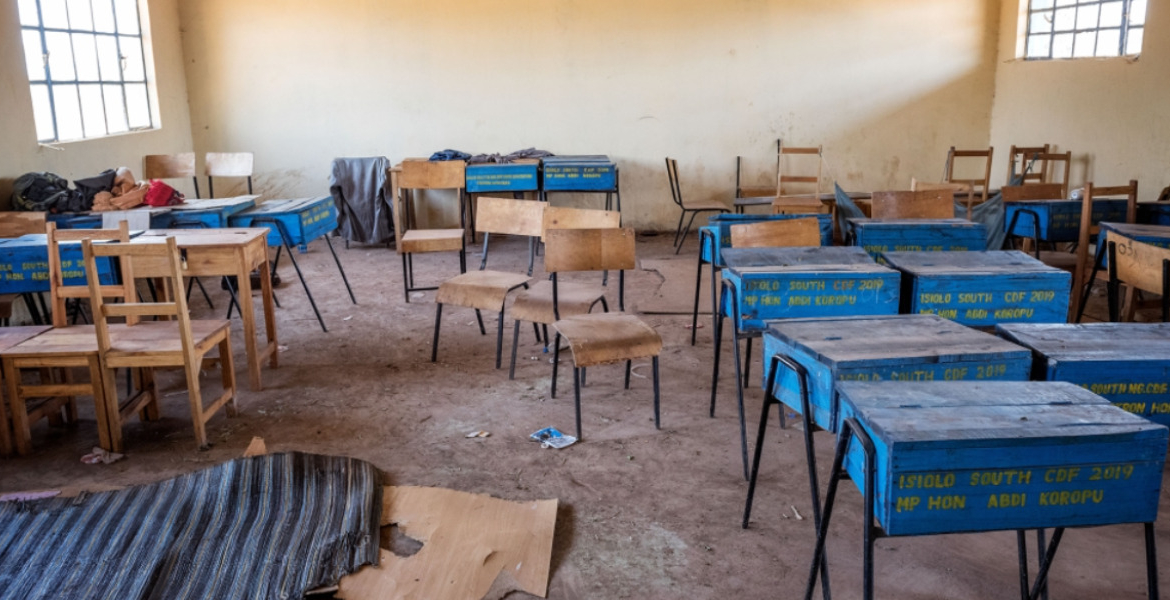Funding Delays Push Kenya’s Public Schools to the Edge of Operational Collapse

A persistent delay in government capitation funding is pushing Kenya's public schools to the brink of operational collapse, forcing widespread cutbacks in critical services and igniting concerns over the future of education for thousands of students.
School principals are voicing growing alarm as institutions struggle with depleted supplies, unpaid staff, and escalating financial pressures that are severely impacting the delivery of quality education. The crisis is most acutely felt in day schools, which accommodate over 70 percent of secondary school students and rely entirely on the Free Day Secondary Education (FDSE) funding provided by the government. The delayed disbursement of these funds has plunged these institutions into a precarious financial situation, jeopardising essential academic functions.
According to Willie Kuria, the National Chairperson of the Kenya Secondary Schools Heads Association (KSSHA), schools are still awaiting Sh2,300 per student from the first term, despite assurances that 50 percent of the annual capitation would be disbursed at the start of the year. The annual allocation per learner is Sh22,244, earmarked exclusively for tuition-related costs, excluding meals and other essential operational expenses.
The absence of these crucial funds has significantly compromised learning activities across the country. Principals report that they have been compelled to curtail laboratory and technical lessons due to a lack of funds to purchase essential materials for practical sessions. Basic necessities, such as chalk, are now being purchased by individual teachers, and many schools have eliminated term opener exams due to the inability to afford printing expenses.
Rural and marginalised schools face even more daunting challenges, with some unable to administer tests at all, leaving students idle and unproductive in classrooms. This disparity exacerbates existing inequalities and undermines the educational prospects of students in underserved communities. Frustration among school administrators is mounting as hopes for timely funding continue to wane.
"We expected funds to be released before schools reopened so that we could resume operations smoothly. However, nothing has come through," Kuria lamented, reflecting the widespread disillusionment among educators.
Reports indicate that the National Treasury has approved the release of funds, but the Ministry of Education has yet to disburse them to schools, causing further delays and exacerbating the financial strain. This bureaucratic bottleneck underscores the need for greater efficiency and accountability in the allocation and distribution of educational resources.
The funding shortfall has also taken a toll on co-curricular activities, with schools forced to scale back extracurricular programs, particularly sports and science competitions, due to insufficient funds to facilitate participation. Science practicals, a critical component of national examinations, have become increasingly challenging to conduct as schools struggle to procure the necessary materials.
Parents have stepped in to provide stationery for students where possible, but the reliance on personal contributions is neither sustainable nor equitable.
This reliance on parental support places an additional burden on families already struggling with economic hardship and creates disparities in access to educational resources. With term two being the longest in the academic calendar, marked by various co-curricular events and mock Kenya Certificate of Secondary Education (KCSE) examinations, principals are worried that further delays could have long-term consequences on students' preparedness.
The impact is particularly severe in hardship areas, where economic conditions have made it nearly impossible for schools to operate effectively. Wangonya Wangenye, National Secretary of the Kenya Teachers in Hardship and Arid Areas Welfare Association, notes that delayed disbursement has compounded the struggles of institutions in these regions, where poor harvests and prolonged droughts have driven up food prices.
“In places like West Pokot and Kapedo, schools must now factor in security-related costs to access basic supplies,” Wangenye explained, referring to frequent banditry that forces suppliers to hire police escorts when delivering goods to schools.
The additional expense is ultimately borne by schools, with some principals dipping into personal funds to sustain operations. Meanwhile, areas like Marsabit and Isiolo are grappling with heightened insecurity, making it difficult for institutions to secure even basic teaching materials. In many schools within these hardship regions, teachers and students alike are going without meals due to financial constraints. The lack of adequate resources has forced some institutions to reduce learning hours to half days, while teachers' morale continues to decline, exacerbated by discussions around the potential withdrawal of hardship allowances.








Add new comment